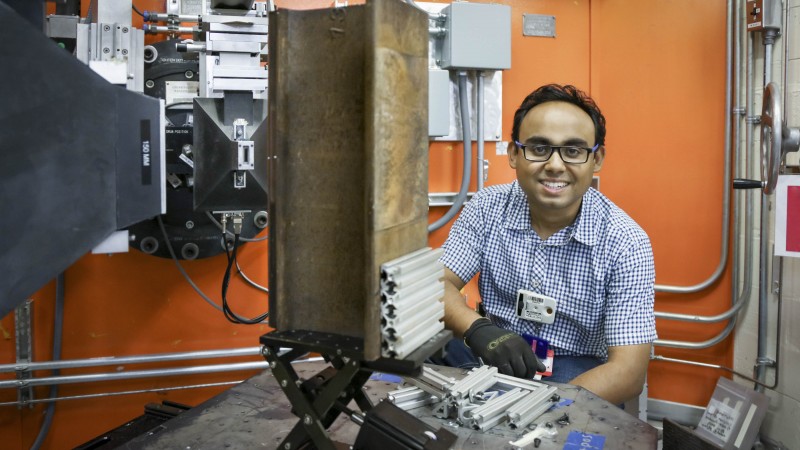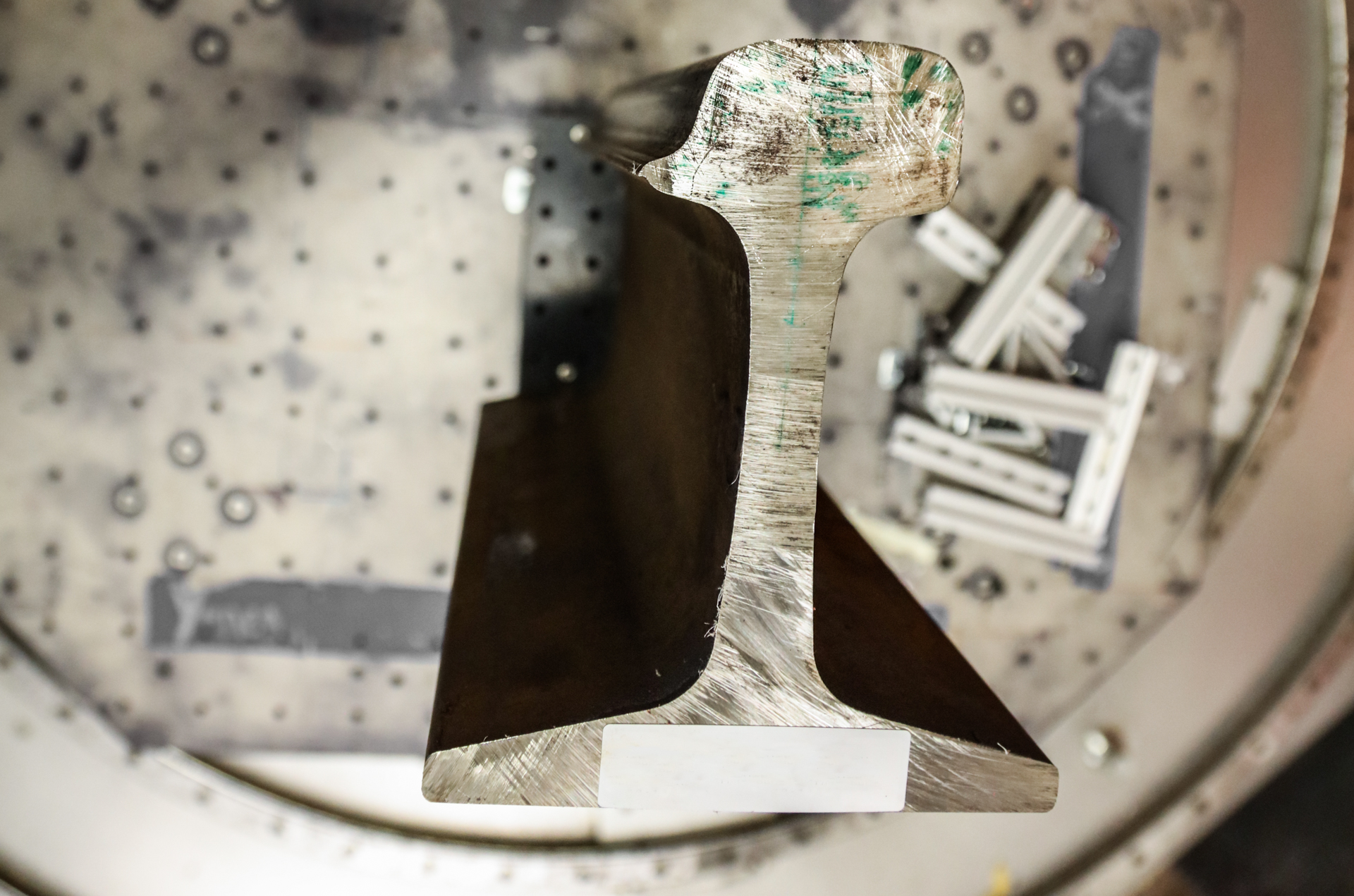Railway rails are designed to endure years of heavy loads and different operating conditions. However, over time, contact forces between the rails and the wheels of trains can cause significant wear and tear on the rails, which then must be replaced to ensure safety and reliability.
Researchers from Transportation Technology Center Inc. (TTCI) are analyzing new and used rail segments with neutrons at the Department of Energy’s (DOE’s) Oak Ridge National Laboratory (ORNL). TTCI is the Association of American Railroads’ research subsidiary in North America, serving the entire North American railroad industry. After studying the rails at its 2.7 mile-long railroad heavy freight testing loop outside Pueblo, Colorado, TTCI is using neutrons to better understand how stress-related effects at the atomic scale influence rail durability and performance over time.
“These rails are being tested in curves, because that’s where we get more wear and tear on the rails, as a result of the wheels rubbing against the rail at high forces,” said TTCI principal investigator Dr. Ananyo Banerjee. “The wheel contacts against the side and top of the rail and slowly wears it down.”
During manufacturing, steel is squeezed and deformed to shape the rail, which creates residual stress in the material’s microstructure during the heating and cooling processes. Neutrons are ideal tools for studying rails as they can penetrate dense metals more deeply than similar methods such as x-ray diffraction.
A section of used rail shows how much steel has worn away on the left side
of the rail head after roughly 4 years in testing. (Image credit: ORNL/Genevieve Martin)
“One of the reasons we are looking at these stresses is that over time, the rail not only wears, it also develops defects inside like fatigue cracks, similar to what we see sometimes in metal components subjected to cyclic loading in other applications,” said Banerjee. “By using the neutron scattering method here, we can quantify these stresses.”
Using the Neutron Residual Stress Mapping Facility, beamline HB-2B at ORNL’s High Flux Isotope Reactor (HFIR), Banerjee was able to map the locations and magnitudes of residual stresses in the rail samples he’s studying. That information provides possible insights into how stresses were created during the manufacturing process that could impact the mechanical properties of the rail during operation.
Banerjee said the neutron scattering data will help TTCI develop improved rail simulation models and other applications to enhance rail durability for increased safety and performance.
HFIR is a DOE Office of Science User Facility. UT-Battelle manages ORNL for DOE’s Office of Science. The Office of Science is the single largest supporter of basic research in the physical sciences in the United States and is working to address some of the most pressing challenges of our time. For more information, please visit http://science.energy.gov/.—by Josh Witt







